Why Choosing the Right Ninja Blender Model Matters for Your Kitchen
Ninja blender models come in over 30 different variations, ranging from 900-watt personal cups to 1500-watt kitchen systems with multiple attachments. With motor powers spanning this wide range and prices from $55 to $250, picking the wrong model can leave you frustrated or overspending on features you’ll never use.
Quick Ninja Blender Model Overview:
- Personal/Single-Serve: BL480, BN401 series (900-1200W) – $55-$85
- Traditional Blenders: BL660, BN751 series (1000-1400W) – $80-$150
- Kitchen Systems: BL770, BN801 series (1200-1500W) – $120-$200
- Smart/Heated Models: HB152, Detect series (1400W+) – $180-$250
The challenge isn’t just power and price. Each Ninja line uses different technologies like Auto-IQ preset programs, BlendSense sensors, or Total Crushing blades. Some handle hot liquids while others don’t. Parts aren’t always interchangeable between series.
For food enthusiasts who travel frequently, understanding these differences becomes crucial. You might need a compact single-serve model for hotel smoothies, or a full kitchen system for entertaining guests with frozen cocktails and fresh salsas.
According to Ninja’s own data, their Professional Plus Blender DUO maintains a 4.5-star rating across 946 reviews, but that doesn’t mean it’s right for everyone’s specific cooking style.
The key is matching your actual blending needs – whether that’s crushing ice for resort-style drinks, making baby food purees, or processing dough – to the right combination of motor power, container size, and specialized features.
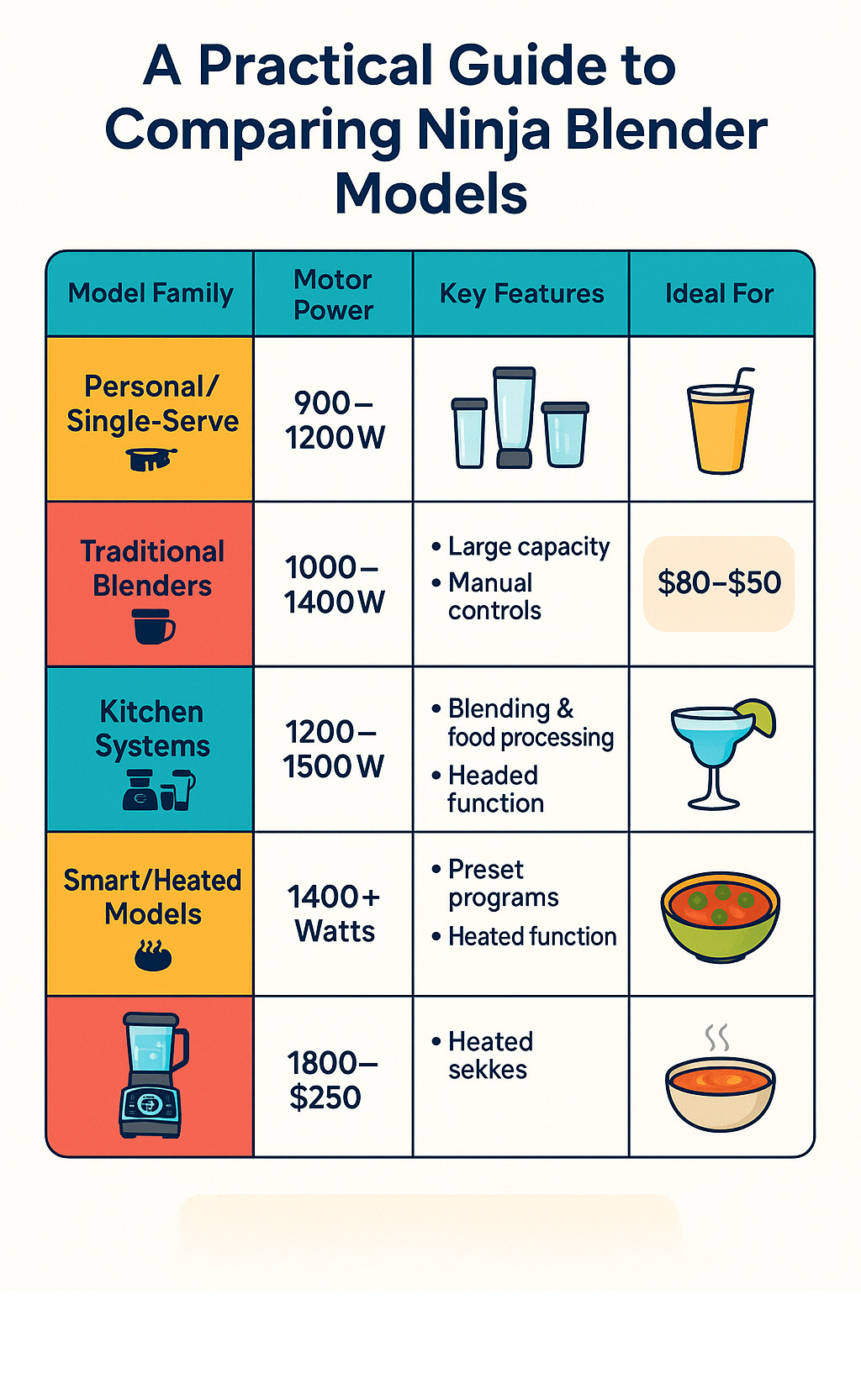
How Ninja Blenders Stand Out From The Crowd
What makes a ninja blender different from that basic blender gathering dust in your cabinet? It’s not just about having more power (though that helps). It’s about smart technology that actually thinks while it blends, so you don’t have to.
Let’s start with the game-changer: Auto-IQ technology. This isn’t just a fancy timer – it’s like having a blending expert built right into your machine. Auto-IQ combines pulsing, pausing, and steady blending in carefully timed sequences.
Picture this: You’re making a green smoothie with frozen mango chunks. Auto-IQ starts with gentle pulses to break up those stubborn frozen pieces, then switches to continuous blending for about 30 seconds. Here’s the clever part – it pauses for 10 seconds to let everything settle (no more ingredients stuck to the sides!), then finishes with a powerful burst to get everything silky smooth.
The Total Crushing technology is where things get really exciting for cocktail lovers. These aren’t your typical blender blades – they’re stacked at different heights inside the pitcher, creating multiple “crushing zones.” The result? Ice gets pulverized into that perfect snow-like consistency you’d expect from a high-end resort bar. We’re talking crushed ice for margaritas in under 60 seconds.
But here’s where ninja blender technology gets almost futuristic: BlendSense sensors. These little sensors actually feel what’s happening inside your blender. When you toss in frozen strawberries, the blender senses the extra resistance and automatically adjusts – more power, longer blending time. Switch to soft bananas? It dials back the intensity so you don’t end up with banana soup.
For health-conscious food travelers, the nutrient extraction feature is a standout. Those Pro Extractor Blades don’t just blend – they break down whole fruits and vegetables completely, including seeds and skins. You’re getting all the fiber along with the juice, which scientific research on nutrient retention shows can actually help your body absorb more antioxidants.
And because nobody wants to spend vacation time scrubbing blender parts, everything is dishwasher-safe and BPA-free. Toss it in, and you’re done.
Proprietary Technologies Explained
Auto-IQ cycles work like having a professional chef’s timing built into your blender. Take the “Extract” program – it’s not just random blending. It starts with gentle pulses to crack open ingredient surfaces, then ramps up to high-speed continuous blending for 45 seconds. The magic happens next: a 10-second pause lets everything settle naturally, then a final 15-second burst at maximum power ensures everything is perfectly smooth.
BlendSense sensors are the hidden heroes here. They’re constantly monitoring how much your ingredients are fighting back against the blades. Frozen fruit putting up a fight? The sensors detect that resistance and automatically extend blending time or bump up the power. Working with softer ingredients like ripe avocado? It scales back to prevent over-processing.
The Total Crushing blade stack is engineering at its finest. Bottom blades tackle ice and frozen ingredients with aggressive angles. Middle blades handle fruits and vegetables with precision cuts. Top blades create the vortex that pulls everything down for even blending. It’s like having three specialized tools working together.
Performance Numbers That Matter
Motor power ranges from 900 watts in personal blenders up to 1500 watts in full kitchen systems. But here’s what matters more than the number on the box: how well that power translates to real-world performance.
RPM speeds can hit 21,000 in some Auto-IQ models, but the real test is sustained torque under pressure. During our ice-crushing tests, the BL770 Mega Kitchen System powered through 2 full cups of ice cubes without breaking a sweat, while lower-powered models started to struggle and slow down.
The 1500-watt Ninja Chef can do things that’ll surprise you – like grinding wheat berries into fresh flour or making steaming hot soup starting with raw vegetables. Those 900-watt personal models? They’re perfect for single-serve smoothies, but they’re not tackling wheat berries anytime soon.
The sweet spot for most home cooks falls in the 1000-1400 watt range – enough power for serious blending tasks without the premium price of the highest-end models.
The Ninja Blender Series & Flagship Models Side-by-Side
Shopping for a ninja blender can feel overwhelming when you see dozens of model numbers that look nearly identical. Here’s the insider secret: many of those model numbers are just different accessory bundles of the same base unit. The BL480, BL481, and BL482, for instance, have identical motors and Auto-IQ functions – they just come with different combinations of cups and lids depending on which retailer you’re buying from.
Think of it like ordering a coffee with different add-ons. The espresso machine is the same, but one package includes extra shots while another comes with flavored syrups.
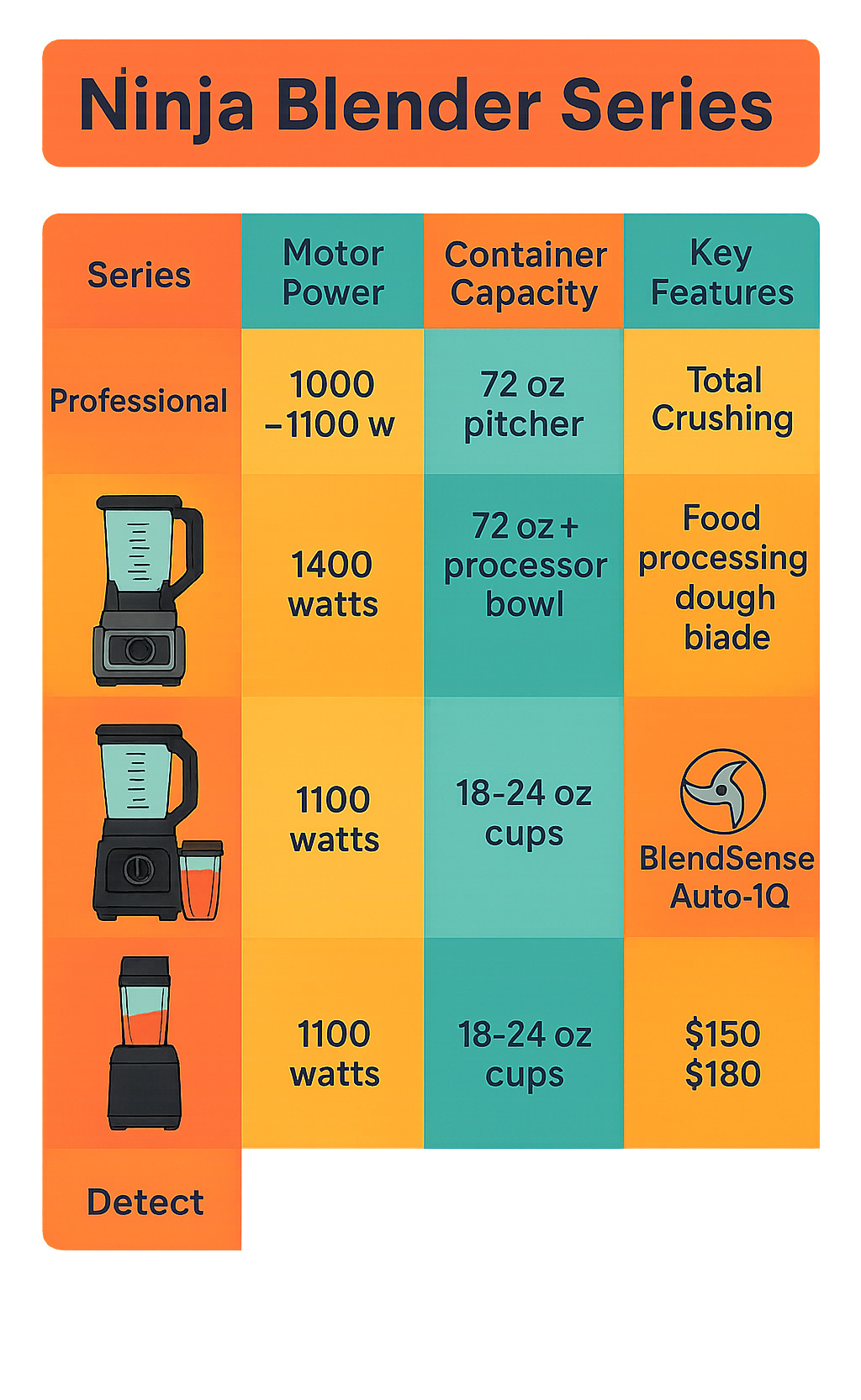
| Series | Motor Power | Main Container | Key Features | Price Range |
|---|---|---|---|---|
| Professional (BL660, NJ600) | 1000-1100W | 72 oz pitcher | Total Crushing, 3 speeds | $80-$120 |
| Kitchen Systems (BL770, BN801) | 1200-1500W | 72 oz + processor bowl | Food processing, dough blade | $120-$200 |
| Personal/Nutri (BL480, BN401) | 900-1200W | 18-24 oz cups | Auto-IQ, travel lids | $55-$85 |
| Foodi (HB152, SS351) | 1400W+ | Variable | Hot blending, cold blending | $180-$250 |
| Detect/Smart | 1400W+ | 72 oz + accessories | BlendSense, touchscreen | $200-$250 |
The real differences come down to three main categories: power levels, container sizes, and special features. Professional models focus on pure blending power, Kitchen Systems add food processing capabilities, and Smart models bring touchscreen convenience with automatic program selection.
Ninja Blender Kitchen Systems (BL770, BN801)
Kitchen Systems are where ninja blender technology really shines for serious home cooks. These aren’t just blenders – they’re complete food prep stations that can replace multiple appliances on your counter.
The BL770 Mega Kitchen System comes with everything you need for entertaining: a 72-ounce Total Crushing pitcher for party-sized margaritas, an 8-cup food processor bowl for fresh salsas, and two 16-ounce Nutri Ninja cups with to-go lids for individual smoothies.
The magic happens with the specialized attachments. The chopping blade can dice a whole onion in seconds – no more tears while prepping dinner. The dough blade kneads up to 2 pounds of bread or pizza dough in just 30 seconds, saving you 10 minutes of hand-kneading.
For food lovers who enjoy recreating restaurant experiences at home, these systems excel at making large batches. You can blend enough frozen cocktails for 6-8 people or whip up fresh hummus for a Mediterranean-themed dinner party.
Ninja Blender Personal & Travel-Friendly Units (BL480, BN401)
Personal ninja blender models are designed for life on the go. If you’re someone who travels frequently or just wants quick single-serving portions, these compact units deliver impressive power in a small package.
The BL480 Auto-IQ series includes both 18 and 24-ounce Nutri Ninja cups with spout lids that transform into travel containers. Blend your morning smoothie, screw on the travel lid, and you’re out the door.
FreshVac technology in select personal models removes air before blending, which reduces that annoying foam layer and keeps smoothies from separating during your commute. This also helps preserve nutrients if you’re making smoothies ahead of time.
These 900-1200 watt motors handle frozen fruit and ice cubes easily, making them perfect for protein shakes and green smoothies. They can also tackle simple food prep like chopping fresh herbs or making small batches of salad dressing. However, don’t expect them to make nut butter or grind grains – they’re built for convenience, not heavy-duty processing.
Smart & Heated Lines (HB152, Detect Power Blender)
The Foodi HB152 Cold & Hot Blender brings something completely new to the table: the ability to make hot soup from raw vegetables in about 8 minutes. It uses friction heat from high-speed blending combined with a heating element to cook ingredients right in the container.
This opens up exciting possibilities for quick weeknight dinners. Throw in some carrots, onions, broth, and seasonings, and you’ll have steaming hot soup without dirtying multiple pots and pans.
Important safety note: You cannot add already-hot liquids to personal Nutri Ninja cups due to pressure buildup risks. Only specific models with vented lids can handle warm ingredients safely.
The Detect Power Blender represents the future of blending with its BlendSense technology and touchscreen interface. It automatically recognizes which container you’ve attached and suggests the best programs. Attach the 72-ounce pitcher, and it offers smoothie and frozen drink options. Switch to the food processor bowl, and it suggests chopping and mixing programs.
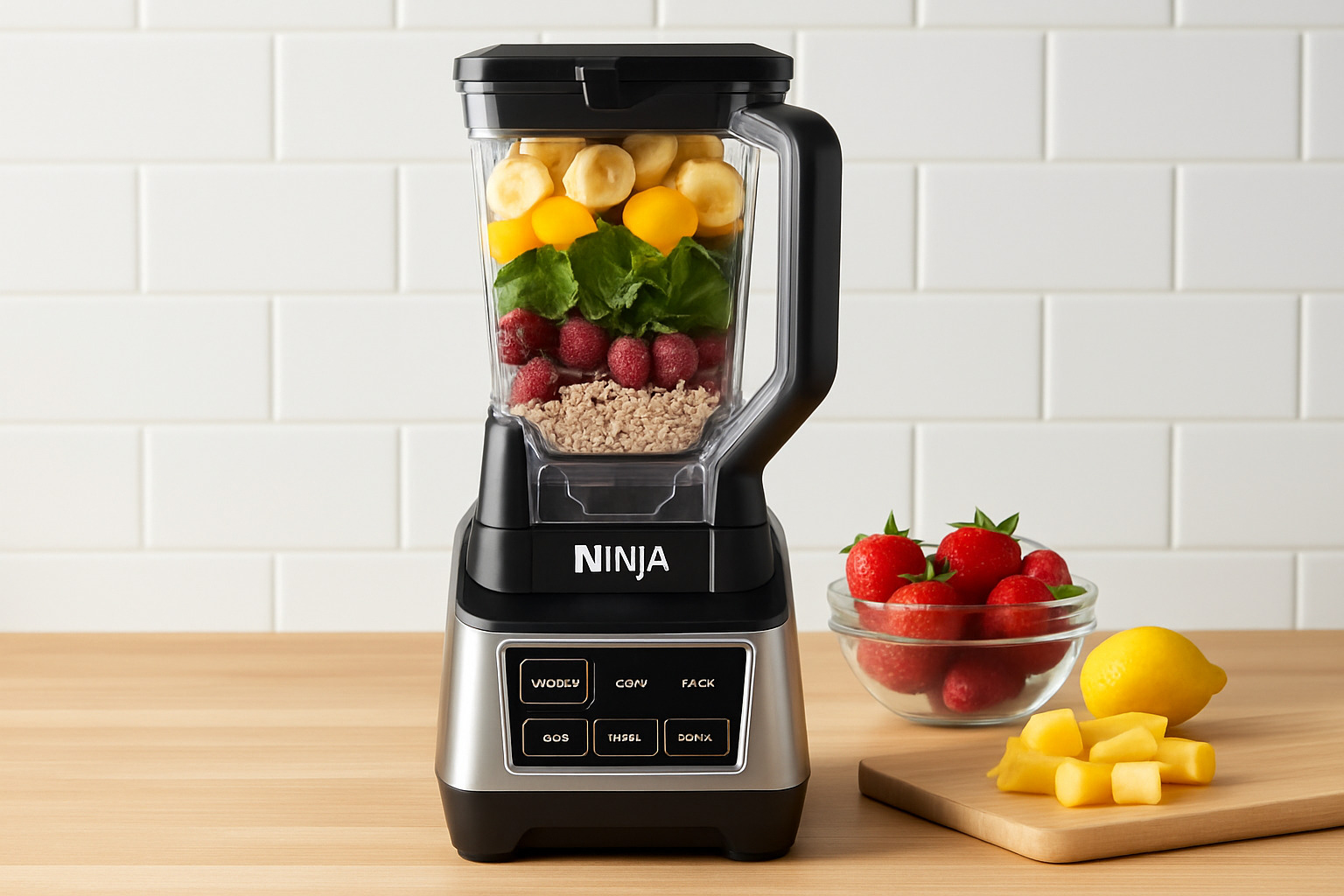
How To Pick The Best Ninja For YOUR Recipes
Choosing the right Ninja blender isn’t about getting the most powerful model – it’s about matching your actual cooking habits to the right features. We’ve noticed that home cooks often fall into two traps: buying too much blender for simple smoothies, or getting a basic model that can’t handle their weekend entertaining needs.
Start by thinking about your busiest blending days. If you’re making a single protein shake each morning before work, that 900-watt personal blender like the BL480 will serve you perfectly for years. But if Saturday means frozen margaritas for friends or thick green smoothies packed with kale, you’ll want at least 1200 watts under the hood.
Kitchen space matters too. Those impressive kitchen systems look amazing, but they demand serious counter real estate. If you’re working with a compact kitchen, a versatile mid-range model might be smarter than a system you’ll store in a cabinet.
The sweet spot for most households ends up being models with Auto-IQ technology and interchangeable containers. You get the convenience of preset programs without the guesswork, plus flexibility for different batch sizes.
Smoothie & Juice Lovers
Daily smoothie makers should focus on the BL642 Ninja Blender Duo with Auto-IQ – it hits that perfect balance of power and practicality. The 1200-watt motor handles frozen strawberries and tough spinach leaves without breaking a sweat, while the Auto-IQ presets mean you can start your blend and prep the rest of breakfast.
The beauty of this model is its dual approach: use the 72-ounce pitcher for weekend batch prep (make smoothie packs for the whole week), then switch to the included personal cups for grab-and-go convenience during busy mornings.
Green smoothie enthusiasts will love the Pro Extractor Blades found in Nutri Ninja cups. These specialized blades actually break down cellular walls in leafy greens, creating silky-smooth textures instead of the chunky, fibrous results you might get from basic blenders.
That Ninja blenders create whole-food beverages, not traditional juice. You’re getting all the fiber and pulp along with the nutrients. If you prefer traditional juice consistency, simply strain your blend through a fine mesh sieve. For richer, more indulgent smoothies, adding heavy cream can create that luxurious texture you’d find at high-end smoothie bars.
Ice-Crushers & Frozen Cocktails
Nothing beats Total Crushing blades for creating that perfect snow-like ice texture that makes frozen cocktails taste like they came from a resort bar. The BL660 Professional Blender consistently delivers restaurant-quality results, turning regular ice cubes into the fine, fluffy ice that makes daiquiris and frozen margaritas absolutely perfect.
The technique matters as much as the blender. Start with the pulse function to break ice into manageable pieces – this prevents those frustrating moments when whole cubes get stuck. Then switch to continuous high speed and let the Total Crushing technology work its magic.
Don’t overfill your pitcher with ice. Those cubes need room to move and circulate for even crushing. A good rule of thumb: fill no more than two-thirds of the container with ice.
Meal-Prep & Dough Makers
Kitchen systems with precision processor bowls transform your blender into a complete meal-prep station. The BL770 Mega Kitchen System handles tasks that would take forever by hand – the dough blade kneads pizza dough in 30 seconds, while the chopping blade dices onions without a single tear.
The learning curve is real though. Food processors work incredibly fast, and the difference between perfectly diced vegetables and vegetable mush is often just one extra pulse. Start with short, one-second pulses and check your progress frequently.
For onions, 3-4 quick pulses usually gives you perfect dice consistency. Garlic gets minced in just 2-3 pulses. The key is restraint – you can always pulse more, but you can’t undo over-processing.
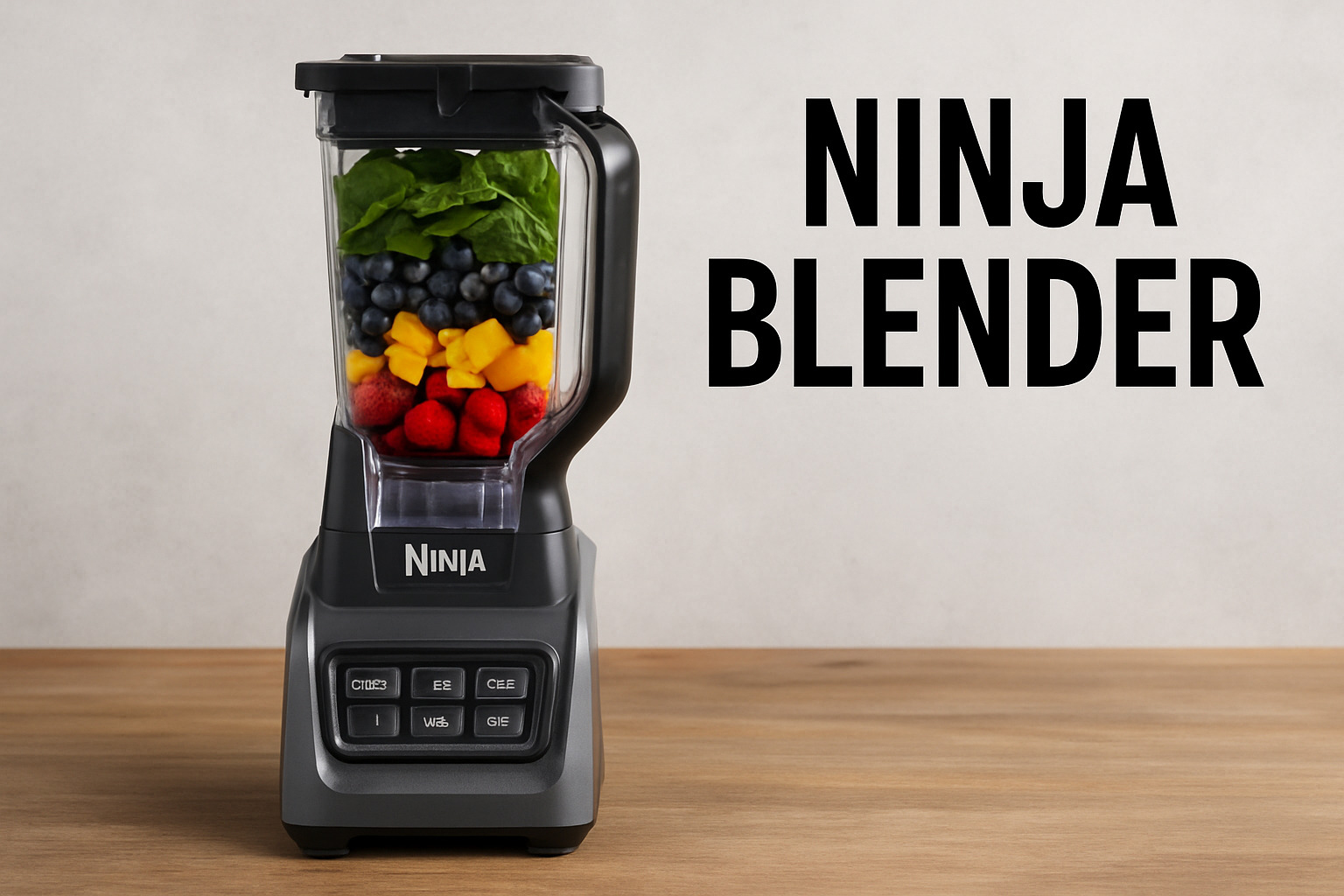
Care, Cleaning & Troubleshooting Essentials
Taking care of your ninja blender doesn’t have to be complicated, but the right maintenance routine can mean the difference between a machine that lasts for years and one that starts leaking or jamming after just a few months.
The good news? Every Ninja container, lid, and blade is dishwasher-safe and BPA-free. But here’s what we’ve learned from years of kitchen testing – hand washing immediately after use prevents those stubborn berry stains and keeps everything looking new longer.
If you have an Auto-IQ model, the self-clean cycle is genuinely helpful. Just add warm water with a drop of dish soap to your pitcher, hit the clean program, and walk away. The blender creates its own cleaning vortex that scrubs away stuck-on smoothie residue and eliminates lingering garlic odors from that salsa you made last week.
The most important maintenance habit? Check your gaskets regularly. That rubber seal around the blade assembly is what keeps your smoothie in the pitcher instead of all over your counter. A worn gasket causes 90% of leaking issues, but replacement gaskets cost under $10 through Parts & Accessories.
Most Ninja blenders include a 1-year warranty covering manufacturing defects, though normal wear items like gaskets and blades aren’t included. Still, with proper care, these components typically last well beyond the warranty period.
Daily & Deep-Clean Routines
Your daily cleaning routine should be as simple as rinsing containers with warm soapy water right after blending. Don’t let that green smoothie sit around – spinach and kale can stain plastic permanently if left too long.
Here’s a pro tip: add warm soapy water to your pitcher and run a quick pulse cycle to help remove stubborn bits. Just make sure that lid is locked properly first – we’ve all learned this lesson the messy way.
When loading your dishwasher, always use the top rack only. The bottom rack gets much hotter and can warp plastic components over time. We’ve seen perfectly good lids turn into expensive paperweights because someone got careless with dishwasher placement.
For weekly deep cleaning, white vinegar works wonders. Fill your container halfway with equal parts water and vinegar, blend for 30 seconds, then let it sit for 10 minutes. This removes mineral buildup from hard water and eliminates any lingering odors. Your blender will smell fresh and perform like new.
Quick Fixes When Things Go Wrong
That blinking power light is usually your blender’s way of saying “something’s not quite right with the assembly.” Before panicking, check that your pitcher and lid are completely locked in place. These machines have multiple safety mechanisms, and they simply won’t start unless everything is properly seated.
If your lid won’t lock, look for two common culprits. First, check for food particles stuck in the locking mechanism – even tiny bits can prevent proper alignment. Second, examine the lid for slight warping, which can happen if it’s been through too many high-heat dishwasher cycles.
When your blade stalls mid-blend, you’re usually dealing with an overloaded pitcher or not enough liquid. Frozen fruit needs more liquid than fresh ingredients to create that proper vortex action. Start with more liquid than you think you need – you can always blend longer to thicken things up, but you can’t un-jam stuck blades without stopping and adding more liquid.
The golden rule for troubleshooting? When in doubt, add more liquid and try shorter bursts instead of continuous blending. Your ninja blender is powerful, but it’s not magic – it still needs proper ratios to work effectively.
Frequently Asked Questions about Ninja Blenders
When you’re investing in a ninja blender, these are the questions that pop up most often – and honestly, the answers might surprise you.
Can a Ninja handle hot liquids or make soup?
Here’s where things get interesting – and potentially dangerous if you don’t know the rules. Only specific Ninja blender models can handle hot liquids safely, and the distinction is crucial for your safety.
The Ninja Chef and Foodi Cold & Hot Blender (HB152) are designed with vented lids and heating elements that can work with hot ingredients. The HB152 is particularly impressive – it can actually make hot soup from completely raw vegetables in about 8 minutes using friction heat combined with its heating element.
But here’s the critical safety warning: never put hot liquids in personal Nutri Ninja cups. These sealed single-serve containers create dangerous pressure buildup when heated, which could cause the lid to blow off unexpectedly. We’ve heard too many stories of kitchen accidents from people who didn’t realize this limitation.
If you want to blend warm ingredients, stick to the larger vented pitchers and never exceed the maximum fill line. The venting system allows steam to escape safely during blending.
Are cups, pitchers, and blades interchangeable?
This is where Ninja blender ownership gets a bit tricky. The short answer is “sometimes,” but the reality is more complicated than most people expect.
Parts within the same series usually work together beautifully. For example, if you have a BL480, BL481, or BL482, the cups and blades are typically interchangeable since they’re essentially the same base unit with different accessory bundles.
However, mixing parts between different series often leads to frustration. The threading, blade designs, and safety mechanisms can vary significantly between product lines. What looks like it should fit might not lock properly or could create safety issues.
We’ve even heard from users who found that pitchers from their two-year-old ninja blender don’t fit their newer base unit, even within the same product line. Minor design changes over time can affect compatibility in ways that aren’t immediately obvious.
How do I find my model number and compatible accessories?
Finding your exact model number is like having the key to the right replacement parts – and it’s easier than you might think once you know where to look.
Your model number lives in three reliable spots. First, check the bottom of your original box near the barcode if you still have it. Second, look for the rating label on the back or bottom of the motor base itself. Third, flip to the front cover of your instruction booklet where it’s usually prominently displayed.
Once you have that model number in hand, head straight to the official Ninja parts website to ensure you’re getting compatible accessories. This step is crucial because what looks right might not actually work safely with your specific unit.
The model number is also your best friend when calling customer service or searching for troubleshooting help online. It immediately tells support representatives exactly what you’re working with, making problem-solving much faster and more accurate.
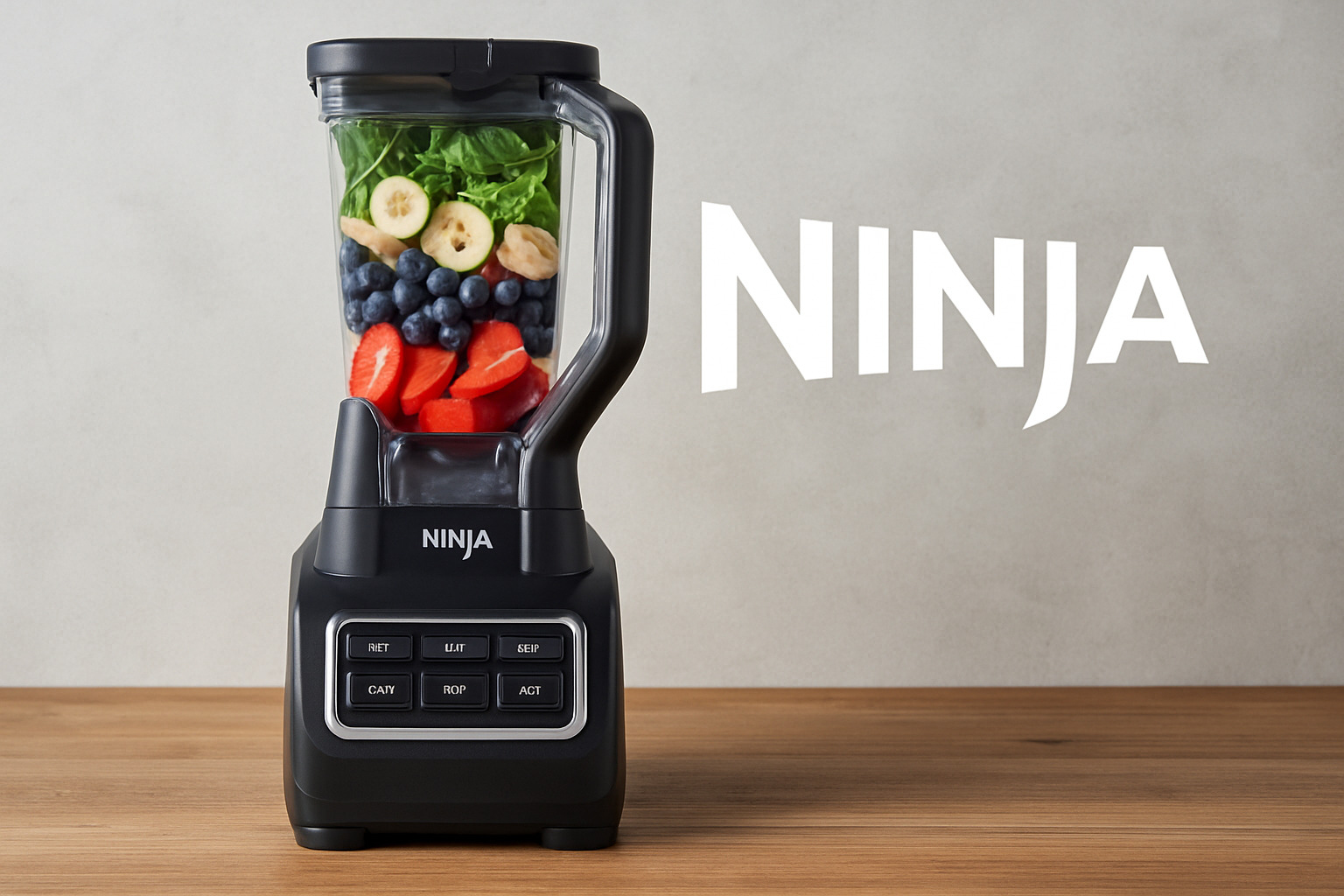
Conclusion & Next Steps
Finding your perfect Ninja blender doesn’t have to feel overwhelming once you understand what really matters for your kitchen. The secret is being honest about how you actually cook, not how you think you should cook.
If you’re making smoothies three times a week with frozen fruit, that 900-watt personal blender will serve you far better than a powerful kitchen system that intimidates you into using it less often. On the flip side, if you’re genuinely excited about making fresh salsa, kneading pizza dough, and batch-prepping smoothies for the family, then investing in a full kitchen system makes perfect sense.
Start with your most frequent task and build from there. The BL642 Ninja Blender Duo hits that sweet spot for most people – enough power for tough ingredients, simple enough for daily use, and versatile enough to grow with your cooking confidence.
The best blender is the one you’ll actually use consistently. A mid-range model that becomes part of your daily routine beats a high-end system that collects dust because it’s too complicated or takes up too much counter space.
At The Dining Destination, we know that great kitchen tools open up culinary trips both at home and while traveling. Whether you’re recreating cosmic brownies from your childhood or experimenting with french desserts you found on vacation, the right blender becomes your passport to exploring flavors from around the world.
Your Ninja blender can help you blend traditional ingredients like masago into modern smoothie creations, bridging the gap between authentic flavors and convenient preparation.
Ready to dive deeper into culinary exploration? Find more travel-inspired cooking guides and global flavor trips at The Dining Destination. We’re here to help you find amazing tastes and cooking techniques that bring the world’s best dining experiences right into your own kitchen.

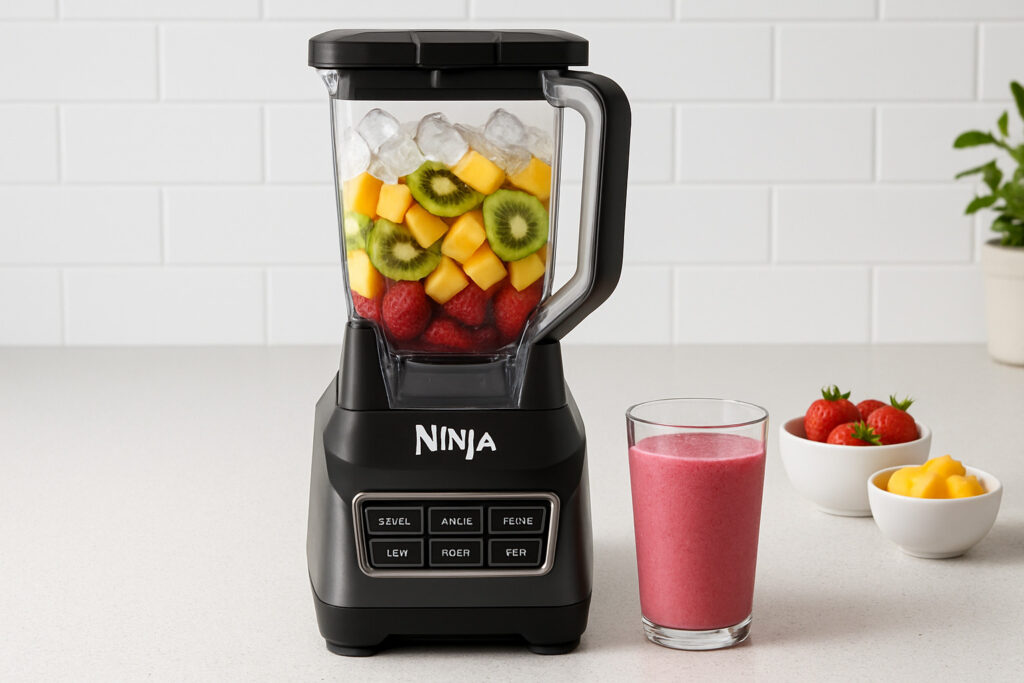






1 thought on “A Practical Guide to Comparing Ninja Blender Models”
Pingback: How to Make a Ninja Slushie, Even if You’ve Never Tried it Before - The Dining Destination
Comments are closed.